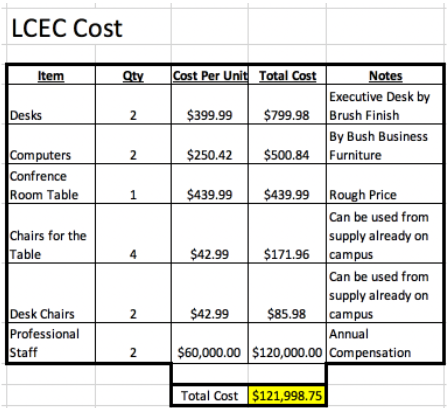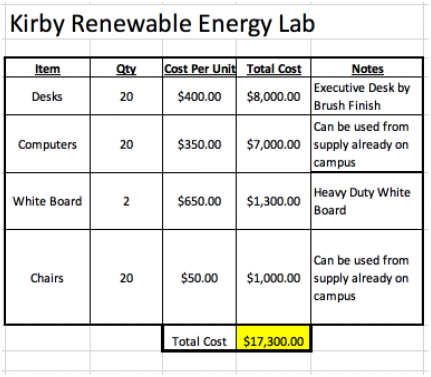Economic Context
Funding new solar projects can be an expensive undertaking and is often the main roadblock preventing new arrays from being built. One benefit available to solar energy projects that can help get them off the ground is the renewable energy credit (REC) program. The federal government gives entities the ability to sell REC that they are given for any renewable energy they generate that exceeds local renewable portfolio standards (RPS) (Rupp, 2018). This gives universities a unique opportunity to sell their RECs. At ASU, they sell most of their on-campus credits to third parties in order to help them meet their renewable energy goals. They can then use the extra funds gained to finance further projects, or they often choose to maintain their extra credits in order to reach their own strict sustainability goals. At Lafayette, while our solar array is at a significantly smaller scale compared to ASU’s program, we can also attempt to make use of similar programs now and in the future. As the college moves closer to meeting its carbon neutrality goals, selling REC’s can be an integral part of funding further solar projects, or allowing the community to invest in the college’s solar program to engage with them and allow smaller groups to help support solar energy initiatives.
The Solar Array itself, and by extension the LCEC, also provide an essential economic source for the Lafayette curriculum. Renewable energy projects, especially solar arrays, are often expensive and economically complicated. The databases located in the LCEC, and the access to the Kirby Solar array provided by the Kirby Solar Lab will give the Economics department at Lafayette the opportunity to offer renewable energy economics classes or research. The field of renewable energy economics has grown significantly in the last decade, and will continue to do so. This makes the Kirby Solar Array an essential research and learning tool for not just the Economics department, but also various engineering departments as well.
In order to break down the economic costs associated with the new energy center, we chose to break our necessary materials and equipment costs into two sections: The Renewable Energy Center (LCEC) in RISC and the Clean Energy Laboratory in Kirby Sports Center. When calculating the cost of the Renewable Energy Center we first modeled what we believed the center would need to operate. For this model we used the current office of sustainability located in Rockwell. In order to get the center up and running we estimated that we would require at least 2 professional staff members to work at the center full time, in tandem with the office of sustainability. In addition to these staff members we would also require the necessary furnishings to complete the center which we estimate to include 2 computers, 2 desks, a conference room style table, 4 chairs, as well as other necessary office supplies. Given these necessities, we estimated the cost of the LCEC to be roughly $121,998.75 (See Table 1).

Table 1: LCEC Rough Cost
For our second group of costs, the Kirby Clean Energy Laboratory we modeled our estimate off of the necessities and equipment needed to develop a working lab in the Kirby Sports Center. First, we determined we would need computers, desks, white boards, and other learning materials. After estimating the cost of these materials (see Table 2 below), which could also be sourced from extra supply within the college, we set out to determine the cost of constructing a microgrid similar to the one used in the Lehigh SMRT Lab. After attempts to find pricing of the individual components, our group was able to find an estimate from Microgrid Knowledge (Microgrid Knowledge, 2021), a think tank on Microgrids and other energy issues which noted that an average microgrid for use on college campuses typically costs $3.3 million dollars per megawatt. Once we had this figure, noting that the Kirby Solar Array is 470 kW or .47 megawatts we did a simple calculation to estimate the cost of the microgrid to be roughly $1,551,000. In tandem with the cost of constructing the lab, we estimate a total cost of $1,568,300.

Table 2: Partial Cost of Kirby Lab